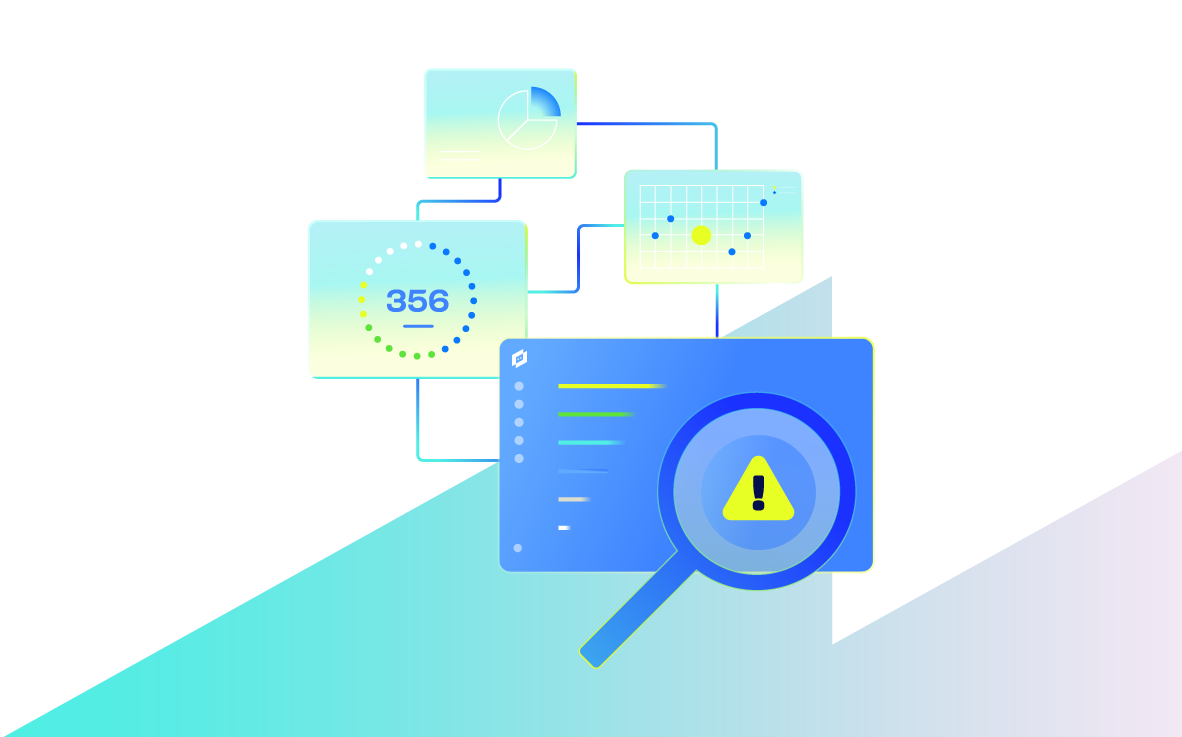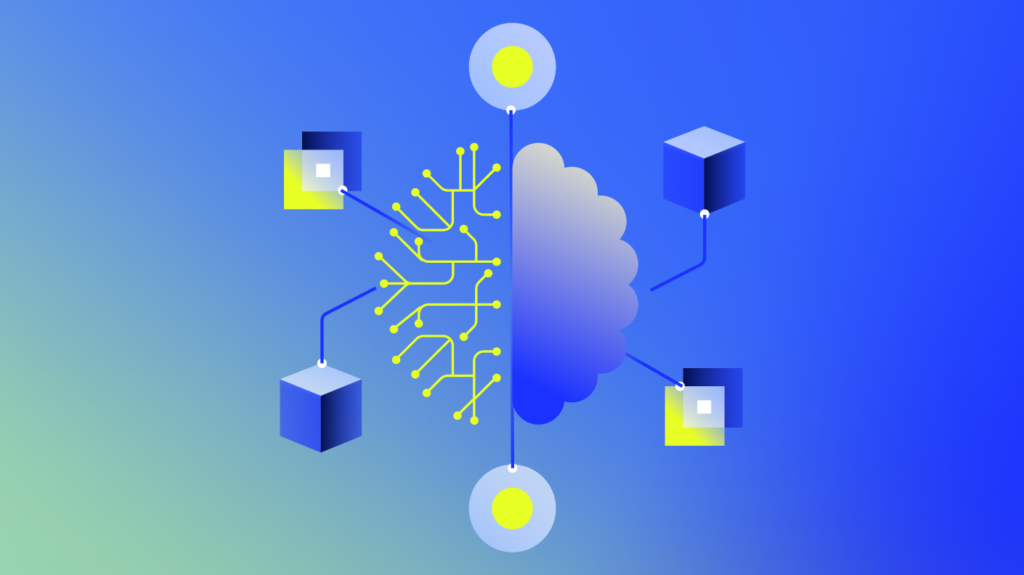The art of monitoring the influence of an application’s performance on business outcomes is constantly evolving. It used to be directing IT teams to act on insights from an Application Performance Monitoring (APM) solution was enough to drive business outcomes. Now we know the user experience has a heavy hand in determining whether a digital platform survives or dies. An APM solution keeps tabs on the performance of application components such as servers, databases, and services. When it comes to monitoring user experience, Digital Experience Monitoring (DEM) is the key component organizations need to go a step further and really understand how users (human, machine, or digital) are interacting with their digital platforms.
Key takeaways




So what is DEM exactly?
DEM is a practice within application performance management that focuses on monitoring and optimizing the overall user experience of digital apps and services. A DEM-enabled monitoring solution combines various techniques to gain insights into user behaviors, experience metrics (page load times, transaction responses, and error rates), application performance, network performance, and infrastructure performance. This allows organizations to proactively identify and address issues driving user satisfaction, improve the overall user experience, and positively drive business outcomes.
While DEM shares a connection with APM, it focuses more on the user’s perspective by tying performance metrics directly to user behaviors and experiences. DEM also complements observability practices by integrating telemetry data into user-centric insights, bridging the gap between technical performance and real-world user interactions.
Over time, DEM has evolved from basic performance monitoring to a sophisticated practice that combines real user monitoring, synthetic testing, and advanced analytics. This progression reflects the growing importance of delivering seamless digital experiences in increasingly complex environments.
Why does DEM matter?
As a monitoring capability, DEM is what mines and presents critical user patterns and trends to IT teams so they can collaboratively elevate their organization’s digital user experience from good to great. In many organizations, APM data gets splintered and analyzed through the lens of the team looking at it. Where DevOps teams are more likely to look at APM insights to keep tabs on application components and code-level performance, ITOps teams are more likely to pay attention to the data regarding broader infrastructure performance (servers, network devices, and databases). DEM provides unified insights from a variety of sources so both DevOps and ITOps get a unified look at the intertwined influences of user behavior, application performance, network metrics, and infrastructure data. This singular data set, coming directly from the users, gets IT teams out of their silos and at the whiteboard to collaborate on solutions.
Consider one scenario organizations will likely experience: a surge in CPU spikes on the servers. In the absence of DEM, DevOps and ITOps teams likely have separate insights into different application components and services, which limits their ability to troubleshoot the problem collaboratively. DEM bridges the gap between DevOps and ITOps, fostering a unified and cohesive approach to monitoring and optimizing the digital experience. It facilitates cross-functional collaboration, breaking down barriers that traditionally impede effective troubleshooting. By eliminating silos and promoting shared visibility, organizations can streamline incident response, reduce mean time to resolution (MTTR), and enhance the overall user experience.
Digital Experience Monitoring bridges the gap between performance metrics and real-world user satisfaction, ensuring seamless interactions across systems.
How digital experience monitoring works
DEM works by leveraging a combination of monitoring techniques and technologies to capture, analyze, and interpret data related to user interactions with digital systems. The primary goal is to provide IT teams with actionable insights into how applications, networks, and infrastructure components impact the end-user experience. Here’s how it operates:
- Data collection: DEM solutions collect data from multiple sources, including real user monitoring (RUM), synthetic monitoring, application logs, and network performance metrics. This data spans application transactions, network latencies, server performance, and user interactions.
- Data correlation: Once collected, DEM correlates data points from these sources to build a cohesive picture of the end-to-end digital experience. For example, it links slow page load times with network bandwidth issues or high CPU usage on backend servers.
- Performance analysis: The solution uses advanced analytics and machine learning to identify patterns and anomalies. This enables IT teams to understand the root causes of performance bottlenecks, such as broken application dependencies or network congestion.
- Visualization of insights: DEM provides intuitive dashboards and reports that showcase user experience metrics, performance trends, and incident details. These visualizations are tailored to different teams, allowing DevOps to focus on application-level details while ITOps can monitor broader infrastructure health.
- Proactive alerting: By leveraging synthetic monitoring and threshold-based alerts, DEM identifies potential issues before they impact users. Simulated user journeys test critical workflows like logins or transactions, offering early warning signs of degradation.
- Collaboration enablement: DEM fosters cross-team collaboration by providing unified insights into user experience. Teams can access the same datasets, identify shared goals, and work cohesively to optimize performance and reduce mean time to resolution (MTTR).
By combining these operational mechanisms, DEM ensures organizations can maintain high-quality digital experiences for their users while proactively addressing performance challenges.
Components of digital experience monitoring
DEM is built on several key components that deliver a comprehensive view of the user experience. These components provide the data and insights necessary to monitor and optimize the performance of applications, networks, and infrastructure. Here are the essential building blocks of DEM:
- Real user monitoring (RUM):
RUM captures data from actual user interactions with an application or website in real time. It measures page load times, transaction durations, and error rates, offering insights into how users experience the platform. This component is invaluable for identifying pain points in the user journey and uncovering opportunities to enhance engagement. - Synthetic transaction monitoring:
Synthetic monitoring uses simulated user interactions to test critical workflows, such as logging into an account, completing a purchase, or searching for a product. By automating these tests, synthetic monitoring helps IT teams proactively detect issues like slow load times, failed transactions, or outages before they affect real users. - Endpoint monitoring:
Endpoint monitoring tracks the performance of devices and applications used by end users, such as desktops, laptops, and mobile devices. By analyzing factors like application responsiveness, network connectivity, and device health, this component ensures that user-side issues are addressed promptly, minimizing frustration and downtime. - Application performance monitoring (APM):
APM focuses on the performance of the application’s backend components, such as databases, APIs, and servers. It helps IT teams detect code-level issues, optimize application performance, and ensure smooth integration with other systems. - Network monitoring:
Since network performance directly affects the digital experience, DEM includes monitoring network metrics such as latency, bandwidth, and packet loss. This ensures that connectivity issues are identified and resolved to maintain seamless user interactions. - Session replay:
This component records and replays user sessions, allowing IT teams to see how users navigate and interact with digital platforms. Session replay is especially useful for diagnosing complex issues that require context beyond raw data points.
Why customer experience matters
Users don’t know which digital offerings use DEM to improve their experiences.
But they will ditch the ones that don’t.
Consider users in the e-commerce and digital retail space. DEM lets those platforms and websites monitor website performance, transaction times, and user interactions. If any of those experiences are suffering from downtime, disrupted transactions, or delayed user interactions, IT teams can use DEM analysis to identify the cause. They can then implement a solution and prevent a spike in cart abandonment rates while improving conversion rates and customer satisfaction ratings.
Let’s explore a second use case for Software-as-a-Service (SaaS) providers. DEM allows them to track user interactions, application response times, and errors to identify opportunities to enhance the customer experience and retain users (who hopefully tell their networks about the positive experience).
In both scenarios, integrating a DEM-enabled application monitoring solution would speed up the process of pinpointing the users’ pain points, diagnosing the root cause, and enabling IT teams to collaboratively solve the problem faster than they could without DEM insights.
Benefits of DEM
DEM-driven insights provide a variety of benefits to organizations looking for data-based strategies to help optimize their resources (both human and financial).
Enhanced user satisfaction
Organizations that monitor user experience metrics, such as page load times, transaction response times, and user interactions, can use this information to prioritize addressing the issues that have the most sway in user satisfaction. Proactively identifying and fixing those high-impact problems will result in higher engagement rates and increased customer loyalty.
Improved performance optimization
The holistic presentation of the end-to-end experience (application, network, and infrastructure performance) enables organizations to identify performance bottlenecks, diagnose issues, and prioritize areas for improvement faster than the competition ruled by an APM solution alone. Leveraging these insights lets IT teams optimize their applications and websites, resulting in faster load times, smoother interactions, and better overall performance.
Data-driven decision making
IT teams can know the solutions they are working on are backed by data that came from the users they are trying to impress. DEM helps developers uncover trends, patterns, and areas of improvement so those teams can prioritize resources to deliver an improved user experience effectively.
A single data set from Digital Experience Monitoring breaks silos and fosters collaboration, reducing resolution times and improving outcomes.
Drawbacks of DEM
Before investing, organizations need to consider some of the complexities they are signing up for when they deploy DEM capabilities in their monitoring solution.
Implementation complexity
For large or complex digital environments, integrating various monitoring techniques, tools, and systems may require upskilling or hiring the expertise needed for a successful implementation. In addition to configuring and fine-tuning the monitoring setup, ongoing maintenance and management of DEM can be a long-term investment.
Data volume challenges
DEM generates vast amounts of monitoring data, which can be overwhelming to process and analyze effectively. Organizations need to have robust data management and analysis capabilities already in place to sort through the onslaught of data, as well as a process in place for converting it into actionable insights for IT teams.
Resource considerations
Integrating and maintaining a DEM solution may require financial and resource investments ranging from procuring monitoring tools to hiring skilled personnel. Ongoing data analysis efforts may require long-term resource allocation.
Despite these drawbacks, many organizations will want to harness the benefits of DEM, as they outweigh the challenges.
Developing a digital experience monitoring strategy
Establishing an effective DEM strategy is essential for enhancing user satisfaction and business outcomes. A well-defined approach ensures that DEM integrates seamlessly with existing processes while delivering actionable insights. Here are the key steps to building a robust DEM strategy:
- Start with user-centric goals:
Define objectives that focus on improving the user experience. This includes reducing page load times, minimizing transaction errors, and ensuring seamless navigation. A user-centric approach aligns IT teams with what matters most—satisfaction and retention. - Leverage real-time analytics:
Enable real-time data collection and analysis to identify and resolve issues as they occur. This proactive monitoring approach minimizes downtime and ensures that problems are addressed before they impact users. - Integrate across tools and teams:
Ensure your DEM solution integrates with other monitoring tools, such as application performance monitoring (APM), network monitoring, and log management systems. This creates a unified view of the digital ecosystem, fostering cross-team collaboration between DevOps, ITOps, and other stakeholders. - Prioritize key metrics:
Identify and track metrics directly influencing the digital experience, such as transaction response times, error rates, and network latency. Tailor these metrics to your industry and use case to ensure relevance and accuracy. - Adopt synthetic monitoring:
Incorporate synthetic transaction monitoring to test critical workflows and identify issues before they reach end users. This proactive testing complements real user monitoring and strengthens overall system reliability. - Establish a feedback loop:
Create a process for continuously evaluating the effectiveness of your DEM strategy. Use insights from monitoring data to make iterative improvements, such as optimizing application code, upgrading network infrastructure, or refining user interfaces. - Communicate insights effectively:
Provide tailored dashboards and reports for different teams. For instance, technical teams may need granular data, while business teams benefit from high-level KPIs. Ensuring clarity in communication helps align efforts across the organization.
Not all DEM-enabled solutions are the same
Selecting the right APM is about more than the list of capabilities. The first consideration should be how a new DEM-enabled APM solution will complement any existing monitoring solutions.
Integration and compatibility
It is essential to evaluate how well the DEM-enabled APM solution integrates with your existing monitoring ecosystem. Consider whether it can seamlessly integrate with other monitoring tools and systems you rely on, such as application performance monitoring (APM) tools, log management, network monitoring, network performance diagnostics, or cloud monitoring platforms. Compatibility between the DEM-enabled APM solution and your existing infrastructure ensures smooth data aggregation, correlation, and analysis.
Scalability and flexibility
Consider whether the DEM-enabled APM solution can scale as your digital infrastructure grows and evolves. It should be able to handle increasing data volumes, monitor diverse applications and services, and adapt to changing technology stacks. Additionally, assess the flexibility of the solution in terms of customization and configuration to align with your specific monitoring requirements.
Context and correlation
An APM solution should provide DevOps and ITOps with context and correlation within observability platforms to manage application performance and gain digital experience insight across hybrid and multi-cloud environments to allow for cross-team collaboration. By proactively sharing those insights into the digital experience, both teams can own the solutions that enhance user satisfaction, increase productivity, and drive better business outcomes.
How LogicMonitor can help
If DEM is a measure of how much an organization values its users’ experiences, then LogicMonitor’s Application Performance Monitoring solution is how organizations show they’re serious about improving the processes and technologies that ensure their operations don’t just meet – but they exceed – users’ expectations.
OpenTelemetry integration monitors end-to-end application requests through distributed services in your existing environment.
Performance metrics capabilities can graph everything from high-level KPIs to granular technical metrics, visualizing business outcomes for the teams that need to deliver them.
Synthetic monitoring brings solution theories to life before users can test them in real time. This capability simulates end-user traffic through automated browser tests of user interactions or transactions, giving early insights into the quality of the end-user experience.
Subscribe to our blog
Get articles like this delivered straight to your inbox








